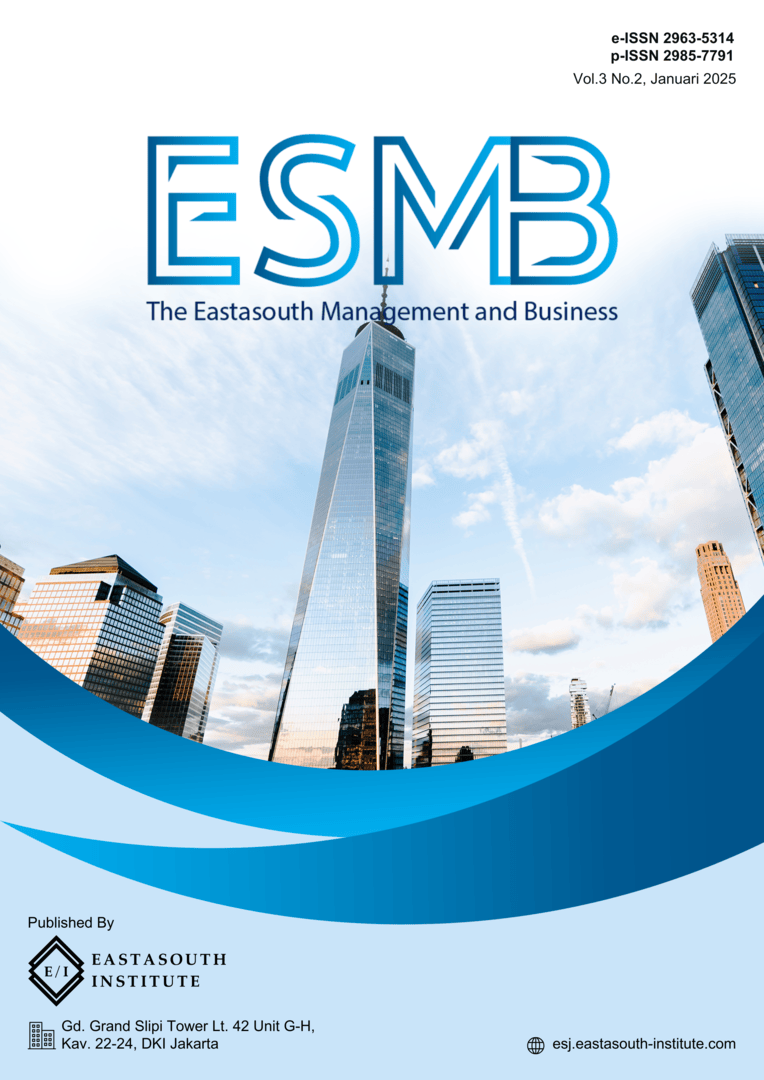Mapping Research Trends on Open Innovation Strategies in Multinational Collaboration
Main Article Content
Abstract
This bibliometric analysis study explores the evolving landscape of open innovation strategies within multinational collaborations over the last two decades. Utilizing data extracted from the Scopus database, this research maps out the thematic and collaborative networks to understand how open innovation has been integrated into different research areas and industries. Key themes such as knowledge management, technology transfer, and sustainable development were identified as closely linked to open innovation. The study also highlights significant geographic distributions, pinpointing the United States, China, and several European countries as central nodes in the global research network. These countries not only dominate the field in terms of publications but also in their roles in fostering international academic collaborations. The findings suggest that open innovation is a vibrant and integral part of modern business strategies and research, benefiting significantly from multinational and interdisciplinary collaborations. This study contributes to the literature by providing a comprehensive overview of the field’s evolution, highlighting influential researchers and identifying emerging trends that could guide future research directions.
Article Details

This work is licensed under a Creative Commons Attribution-ShareAlike 4.0 International License.
References
H. W. Chesbrough, “Open innovation: The new imperative for creating and profiting from technology,” Harvard Bus. Sch., 2003.
J. West and M. Bogers, “Leveraging external sources of innovation: A review of research on open innovation,” J. Prod. Innov. Manag., vol. 31, no. 4, pp. 814–831, 2014.
O. Gassmann and E. Enkel, “Open innovation: Externe Hebeleffekte in der Innovation erzielen,” Zeitschrift Führung+ Organ., vol. 3, pp. 132–138, 2006.
T. Ozawa, “Foreign direct investment and economic development,” Transnatl. Corp., vol. 1, no. 1, pp. 27–54, 1992.
H. W. Chesbrough and M. M. Appleyard, “Open innovation and strategy,” Calif. Manage. Rev., vol. 50, no. 1, pp. 57–76, 2007.
K. Laursen and A. Salter, “Open for innovation: the role of openness in explaining innovation performance among UK manufacturing firms,” Strateg. Manag. J., vol. 27, no. 2, pp. 131–150, 2006.
I. Zupic and T. Čater, “Bibliometric methods in management and organization,” Organ. Res. methods, vol. 18, no. 3, pp. 429–472, 2015.
H. Chesbrough, “The logic of open innovation: managing intellectual property,” Calif. Manage. Rev., vol. 45, no. 3, pp. 33–58, 2003.
H. Chesbrough and A. K. Crowther, “Beyond high tech: early adopters of open innovation in other industries,” R&d Manag., vol. 36, no. 3, pp. 229–236, 2006.
E. Enkel, O. Gassmann, and H. Chesbrough, “Open R&D and open innovation: exploring the phenomenon,” R&d Manag., vol. 39, no. 4, pp. 311–316, 2009.
S. Bröring and P. Herzog, “Organising new business development: open innovation at Degussa,” Eur. J. Innov. Manag., vol. 11, no. 3, pp. 330–348, 2008.
Y. L. Doz and G. Hamel, Alliance advantage: The art of creating value through partnering. Harvard Business Press, 1998.
T. Saxton, “The effects of partner and relationship characteristics on alliance outcomes,” Acad. Manag. J., vol. 40, no. 2, pp. 443–461, 1997.
E.-H. Yoo and S.-Y. Lee, “Glucose biosensors: an overview of use in clinical practice,” Sensors, vol. 10, no. 5, pp. 4558–4576, 2010.
R. Kapoor and J. M. Lee, “Coordinating and competing in ecosystems: How organizational forms shape new technology investments,” Strateg. Manag. J., vol. 34, no. 3, pp. 274–296, 2013.
M. Bogers, R. Hadar, and A. Bilberg, “Additive manufacturing for consumer-centric business models: Implications for supply chains in consumer goods manufacturing,” Technol. Forecast. Soc. Change, vol. 102, pp. 225–239, 2016.
D. Miller, “The correlates of entrepreneurship in three types of firms,” Manage. Sci., vol. 29, no. 7, pp. 770–791, 1983.
P. A. Hall, “An introduction to varieties of capitalism,” Var. Capital. Institutional Found. Comp. Advantage/OUP, 2001.
E.-C. Martins and F. Terblanche, “Building organisational culture that stimulates creativity and innovation,” Eur. J. Innov. Manag., vol. 6, no. 1, pp. 64–74, 2003.
R. E. Speece, “Anaerobic biotechnology for industrial wastewater treatment,” Environ. Sci. Technol., vol. 17, no. 9, pp. 416A-427A, 1983.
S. Blank, “Why the lean start-up changes everything.” Harvard Business Review, 2018.
B. E. Hardin, H. J. Snaith, and M. D. McGehee, “The renaissance of dye-sensitized solar cells,” Nat. Photonics, vol. 6, no. 3, pp. 162–169, 2012.
J. West and S. Gallagher, “Challenges of open innovation: the paradox of firm investment in open‐source software,” R&d Manag., vol. 36, no. 3, pp. 319–331, 2006.
H. Schaffers, N. Komninos, M. Pallot, B. Trousse, M. Nilsson, and A. Oliveira, Smart cities and the future internet: Towards cooperation frameworks for open innovation. Springer Berlin Heidelberg, 2011.

